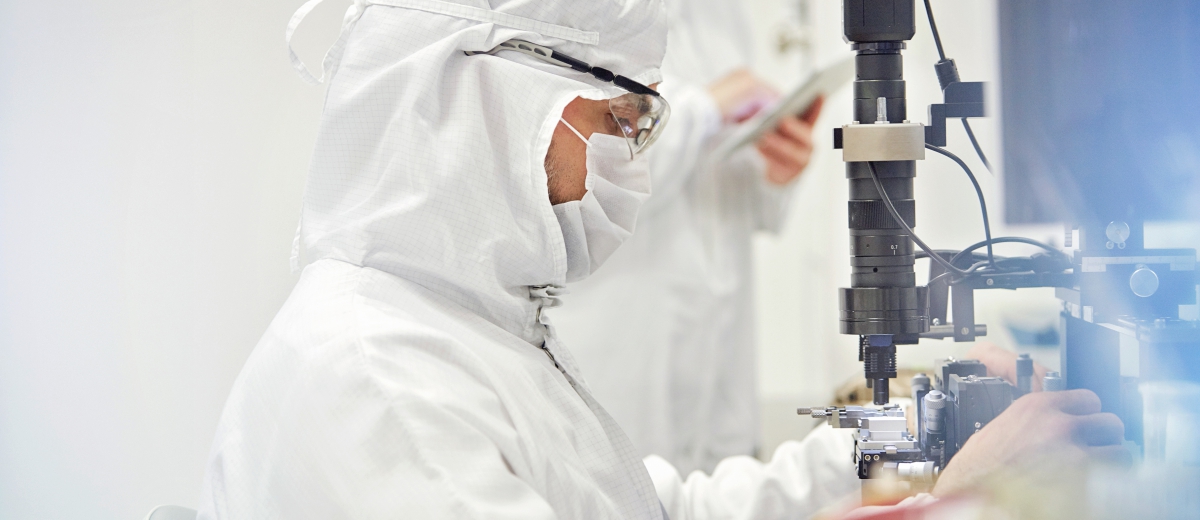Cleanroom construction process environment control

A cleanroom or clean room is a facility ordinarily utilized as a part of specialized industrial production or scientific research, including pharmaceutical items, integrated circuits, LCD, OLED, and microLED displays. Cleanrooms are designed to maintain extremely low levels of particulates, such as dust, airborne organisms, or vaporised particles. Cleanrooms typically have a cleanliness level quantified by the number of particles per cubic meter at a predetermined molecule measure. The ambient outdoor air in a typical urban area contains 35,000,000 particles for each cubic meter in size range 0.5 μm and bigger in measurement, equivalent to an ISO 9 cleanroom, while by comparison, an ISO 1 cleanroom permits no particles in that size range and just 12 particles for each cubic meter of 0.3 μm and smaller.
Insufficient cleanliness or poor maintenance of the cleanroom environment would frequently cause micro-contamination sources that hard to remove the background particles. The remaining ionic metals or organic compounds (anions and/or cations) produced by the process will cause the yield to drop. Poor cleanroom design may affect the efficiency of the cleanroom and directly or indirectly affect the pollution of machine equipment and products. Particle-free products with insufficient cleanliness or poor durability can easily cause excessive particle generation and produce some ionic metal or organic compound (TVOC, AMC, anions, and cations) micro-contaminations. Particle-free consumables include garments, shoes, disposable gloves, masks, shoe covers, wipes, paper, and related supplies used by personnel. Particle-free products with insufficient cleanliness or poor durability can easily cause excessive dust generation or produce some ionic metal or organic compound pollutants. The electrostatic effect after use may also cause particulate adsorption. In addition to improper dust-free products may affect the efficiency of the cleanroom, it will also directly or indirectly affect the machine equipment and cause product contaminations.
SGS provides a total solution for cleanroom from design, construction, validation, and counseling. SGS refers to relevant standards such as ISO 14644-1:2015, NEBB... and assists manufacturers in implementing total solutions of cleanrooms. The effectiveness of cleanroom air conditioning is the primary task of confirming and maintaining the cleanliness of the cleanroom. SGS has the most complete cleanroom test items and several international standard test technologies. At present, SGS cleanroom testing refers to the international standard ISO 14644-1:2015 and the U.S. Federal Standard 209E and NEBB specifications. It provides complete testing services for dust-free and sterile spaces in optoelectronic semiconductor, biotechnology, pharmaceutical, and aerospace automotive industries. Combining the analysis and testing capabilities of laboratories around the world, we provide customized professional testing projects and integrated service solutions.
|
Process environment recommended monitoring items |
Related monitoring items |
|
Airborne Particle(ISO 14644) |
CDA/ Clean Dry Air(ISO 8573) |
|
Differential pressure test(ISO 14644) |
Process pure water |
|
Temperature and humidity test(ISO 14644) |
Surface contact microbial test(ISO 14698) |
|
Wind speed/air volume test(ISO 14644) |
Surface cleanliness of cleanroom consumable(ISO 16232) |
|
Air Exchange Tets(ISO 14644) |
Cleanliness test of cleanroom consumable(IEST) |
|
HEPA leaking test(ISO 14644) |
Cleanroom equipment dynamic emission test(ISO 14644-14) |
|
Planktonic bacteria test(ISO 14698) |
|
|
Airborne bacteria test(ISO 14698) |

